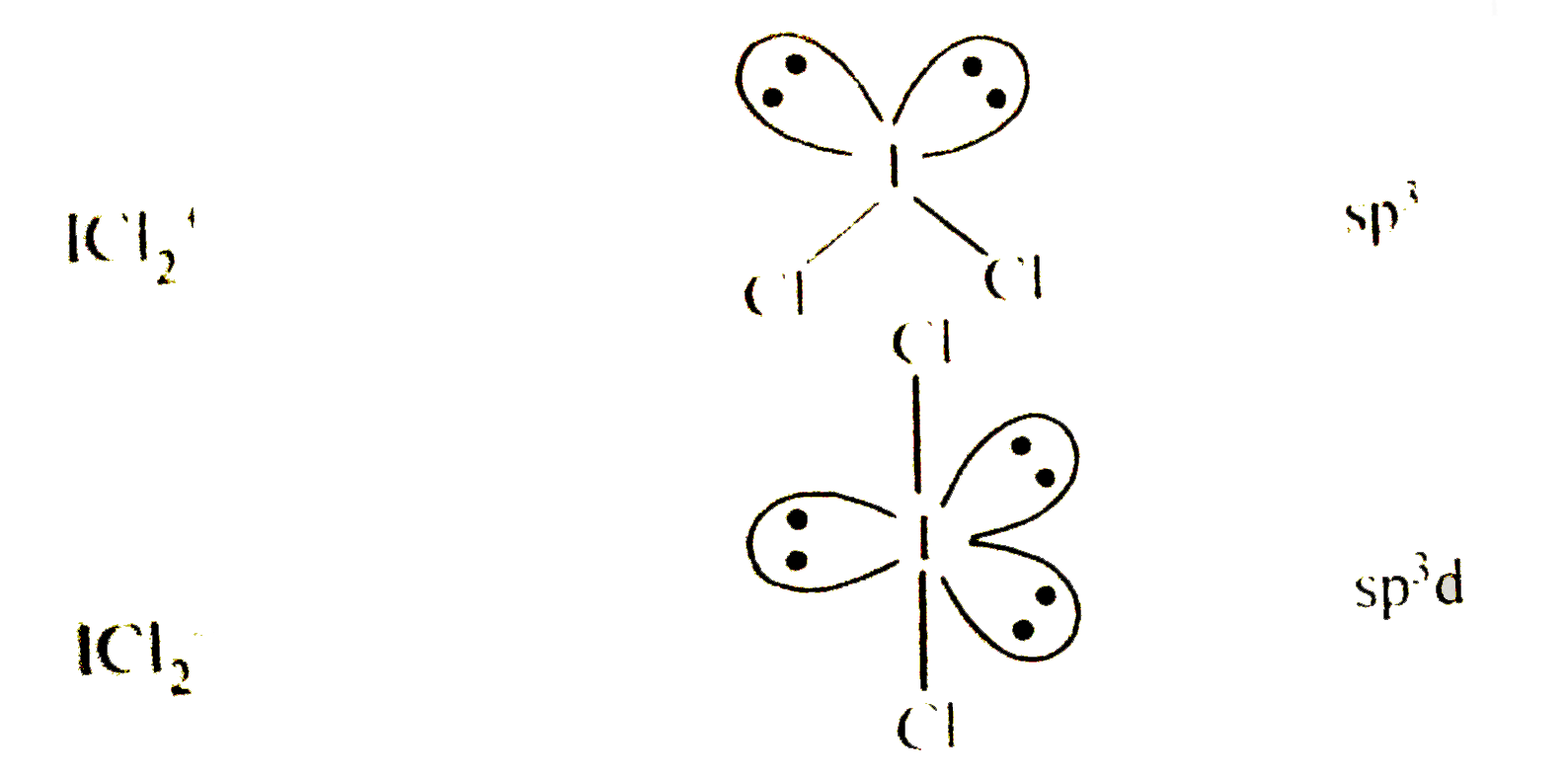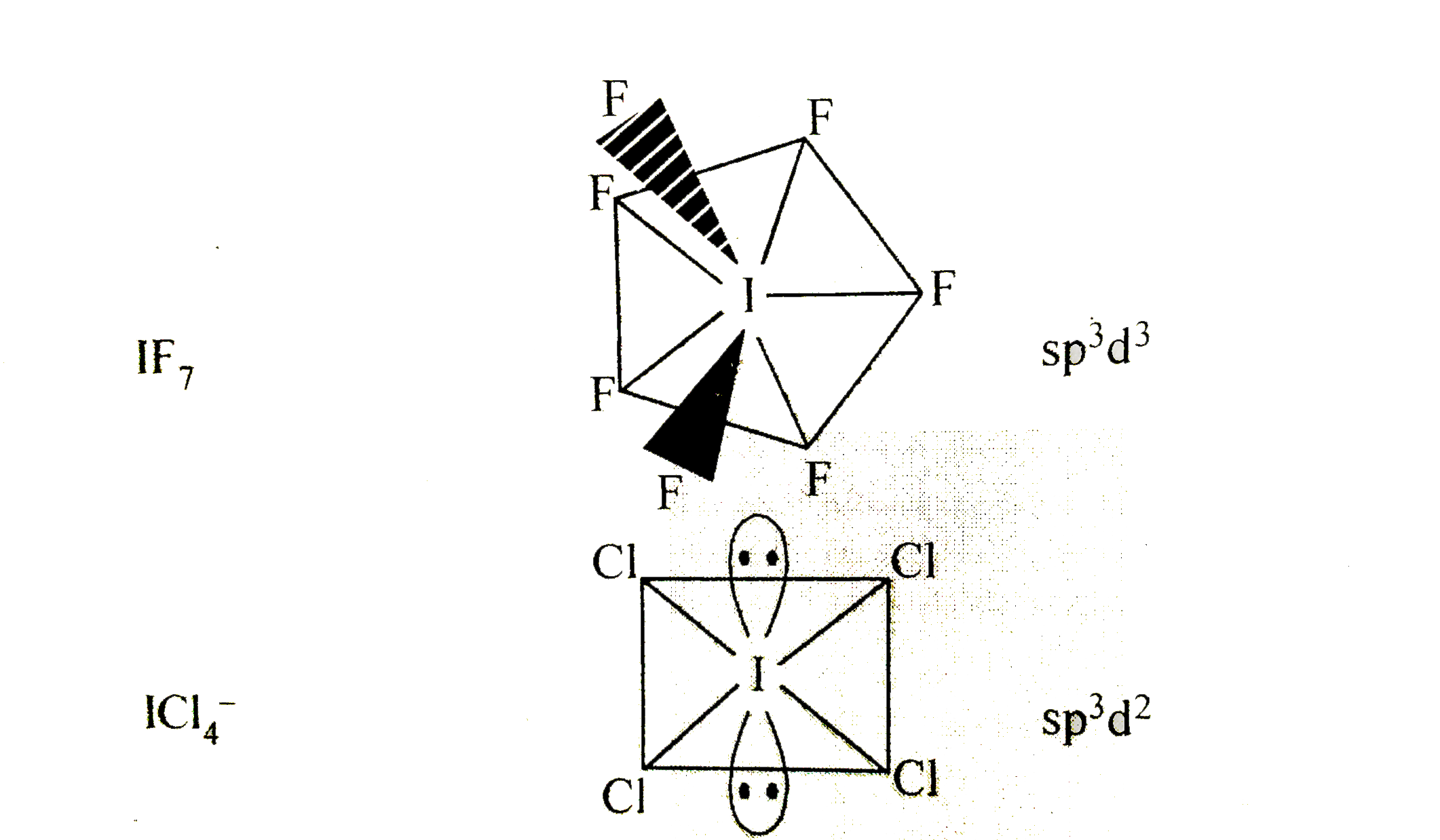Hybridisation is the chemists attempt to explain the observed molecular shape by constructing hybridised atomic orbitals with the appropriate inter orbital angles. The molecule for which d eviation form normal bond angle is observed, VSEPR theory suggest electron pair repulsive interaction (lp−lp>lp−bp−bp). While from hybridisation point of view that is departure from normal hybridisation beacuse the angle between any equivalent hybrid orbitals determine the fraction of s and p character of the hybrid and vice - versa.
In which species number of lone pair on iodine and number of d-orbitals used in hybridisation by iodine are same
A
ICl+2
B
ICl−2
C
IF2
D
ICl−4
Text Solution
The correct Answer is:D
|
Similar Questions
Knowledge Check
Hybridisation is the chemists attempt to explain the observed molecular shape by constructing hybridised atomic orbitals with the appropriate inter orbital angles. The molecule for which d eviation form normal bond angle is observed, VSEPR theory suggest electron pair repulsive interaction (lp−lp>lp−bp−bp). While from hybridisation point of view that is departure from normal hybridisation beacuse the angle between any equivalent hybrid orbitals determine the fraction of s and p character of the hybrid and vice - versa.
An element 'A' has outer shell electronic configuration is 5s25p6. If A form covalent compoun AF2 with fluorine. The orbitals used by 'A' for bonding areAd-orbitalsBp-orbitalsCsp-hybridised orbitalDsp3d hybrid orbitalAs the s-character of hybridisation orbital increase, the bond angle
AIncreaseBDecreasesCBecomes zeroDDoes not changeAs the s-character of hybridisation orbital increases, the bond angle
AincreasesBdecreasesCbecomes zeroDdoes not change
Atomic orbitals involved in hybridisation of SF6 molecule
View SolutionAngle between two hybridised orbital is 105∘ and hence the percentage of s-character in the hybridised orbital would be in the range .
View SolutionAtomic orbitals involved in hybridisation of SF6 molecule
View SolutionAngle between two hybridised orbital is 105∘ and hence the percentage of s-character in the hybridised orbital would be in the range .
View SolutionIn which hybridisation, resulting all orbitals are NOT equivalent-
View Solution


